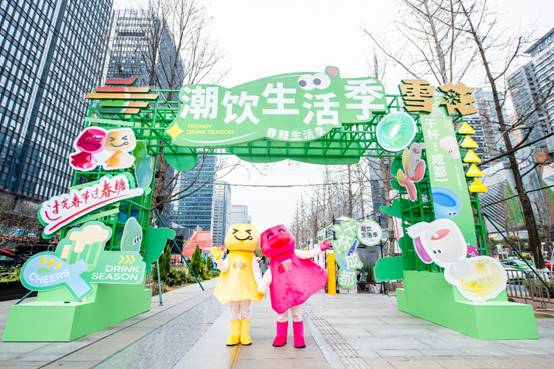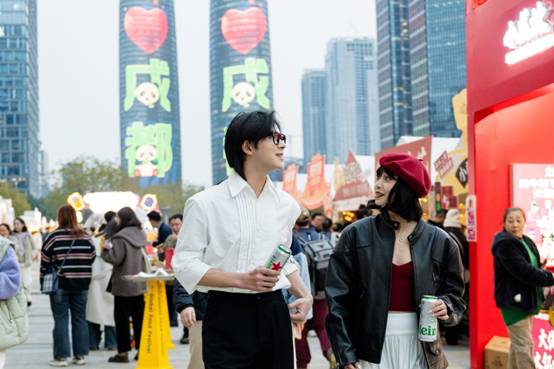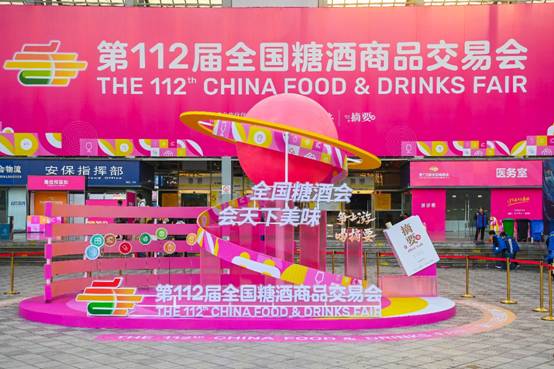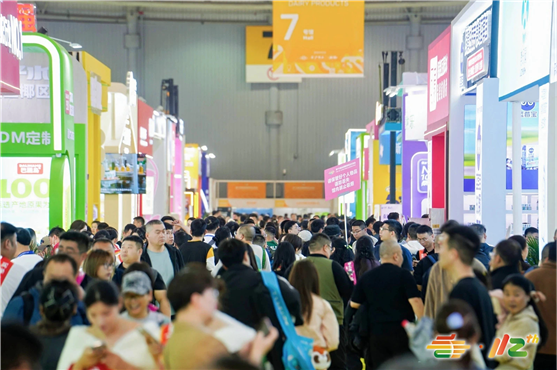320,000 Sq Ft Expo Ignites Chengdu! Spring Sugar Season Draws 430,000, Unveiling New City Consumption Engine
reporter :news
Chengdu in March was filled with the sweet aroma of wine and the heat of surging crowds. The 112th National Sugar & Alcoholic Commodities Fair (Spring Sugar & Wine Fair), under the creative theme "After Spring Festival comes Spring Sugar," transformed an industry exhibition into a city-wide spring carnival. This "2025 Spring Sugar Season," presented by COFCO Sugar and chief partner Snow Beer, ignited the city's passion with its "Spring Tipsy Plan." For the first time, it adopted a "Month-Long Revelry" model, breaking from tradition – spanning from early March pre-events to the fair's closing. Eleven core commercial districts across Chengdu hosted 213 themed activities, creating a multi-dimensional consumption matrix of "shopping + culinary experiences + trendy entertainment + industry linkage."

Official data revealed over 430,000 attendees flooded the dual venues of Century City and Western China International Expo City, with peak daily offline foot traffic exceeding 150,000. This surge drove average revenue growth of 23% in the catering, hotel, and retail sectors.
The Chengdu Model: Turning Traffic into Sales
The breakout success of the Spring Sugar Season lay in "Creating Momentum through Festivalization." Iconic landmarks became satellite venues: Kuanzhai Alley hosted "Sichuan Liquor Pop-up Tastings," Jinjiang Night Market featured a "Global Snack Street," and Dongjiao Memory held a "Mixologist Challenge." At the highly popular "Spring Sugar Masters Mixology Season," the winning team "UK-HK Finance" wowed the crowd with "Shu Flame" – a blend of Sichuan peppercorn-infused whisky. Their creative video garnered over 10 million views on TikTok (Douyin).

The deeper economic logic was the "seamless integration of exhibition and city life." The organizing committee collaborated with local merchants to distribute millions of yuan in consumption vouchers, precisely channeling expo traffic into neighborhood stores. According to Chengdu Municipal Commerce Bureau monitoring, total citywide online and offline consumption during the season grew 5% year-on-year, with the night economy contributing 41% of this growth.
Global Food & Beverage "Super Showcase"
Stepping into the 320,000-square-meter (3.45 million sq ft) exhibition halls felt like entering a "kaleidoscope" of the food industry. Chief partner Jinsha Liquor's Zhaiyao Baijiu brought international guests and tech showcases; Moutai featured AI sensor chips embedded in crystal bottles; Yili launched smart yogurt cups monitoring gut health; and a Japanese delegation presented molecular ice cream infused with sake flavors. Among 6,612 exhibitors, 68% of the 300,000 showcased products were global or regional debuts.

In the newly established "AI Equipment Zone," an intelligent sorting robot from a Shenzhen tech company drew crowds – capable of visually identifying and sorting defective nuts in 0.8 seconds with an error rate of just 0.003%. "This isn't just a product showcase; it's a roadshow for industry upgrading," remarked an industry observer.
Global Flavors, Mutual Embrace
International participation was the standout feature this year: Bordeaux château owners hosted barrel tastings, the Colombian Ambassador promoted coffee beans, and Thai chefs demonstrated durian sticky rice preparation. Among exhibitors from 52 countries, Georgia's qvevri wine booth was exceptionally popular. "We received annual orders from Chengdu's high-end restaurants within just two hours of opening!" exclaimed its excited representative.
More notably, the buyer structure underwent a qualitative shift: purchasing delegations from Hong Kong, Macau, and Taiwan grew 82% year-on-year, and Vietnamese companies formed their first group specifically seeking condiment production lines. The vibrancy of cross-border trade was evident: the international zone hosted over 2,000 business meetings daily, with demand for on-site translation services tripling.

China's Countryside Within the Expo
Hall 16 at the Western China Expo City staged a "counterattack drama" for local specialties in the "Hundred Counties, Thousand Products, Ten Thousand Blessings" zone. Ganzi County's matsutake yak meat sauce sold out 5,000 bottles in 3 minutes via Kuaishou influencer livestreams; Shiqu County's white truffle gift boxes were bulk-purchased by a Shanghai supermarket chain. Of the agricultural products brought by 46 counties and cities, 72% were organically certified, and 38% held geographical indications (GI).
The zone director revealed the key to success: "We matched buyer demands three months in advance. For example, we customized small-packaged selenium-rich millet for Shenzhen fresh produce e-commerce platforms." This precision matching generated 94.51 million yuan in intended orders, equivalent to the annual e-commerce sales of some counties.
Epilogue: Industry Transformation Behind the Revelry
As the crowds dispersed, the legacy of the Sugar & Wine Fair extended beyond consumption figures. The "Food & Beverage Industry ESG Initiative" released during the fair requires companies to disclose carbon emissions and raw material traceability. At the IDEAS Innovation Competition, healthy products like plant-based cheese and additive-free fruit vinegar accounted for over 70% of entries.
As the Chairman of COFCO Sugar stated at the closing ceremony: "The Sugar & Wine Fair is evolving from a trading platform into a builder of industry ecosystems." This spring revelry has undoubtedly sown the seeds for the high-quality development of China's food industry.


